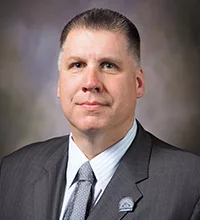My company does not do a lot of commercial work but one specialty niche we have is servicing the boilers and mechanical systems in the turn of the century apartment buildings that were built in D.C. between 1890 and 1930. These buildings had grand names like The Wyoming, The Alta Vista, The Northumberland, The Westchester and The Mendota. Almost all of them were heated by steam systems, one-pipe and two-pipe. I wrote about the steam boiler in the latter in my October 2014 column ( “Commercial Steam”).
These buildings are either nearing or past the century mark. Old piping is tied to new equipment. Many systems are cobbled together with a patchwork of new and old equipment and controls. It can be a challenge to repair and work on these old systems.
We were recently called to look at the domestic hot water (DHW) system at The Mendota, a 47-unit apartment building built in 1901. The existing system was unreliable, leaving the building without hot water on a regular basis. DHW is provided by a single 380k BTU tank style gas water heater connected to a 500-gallon glass-lined steel storage tank.
The storage tank was close to 30-years-old and was starting to leak. The light-commercial gas water heater required regular repairs and would be replaced approximately every two to three years, at considerable expense. This type of heater is not designed for a heavy-duty commercial application. It could not keep up with peak demand and was over-worked, causing premature failure. Typically the crown sheet would crack and leak due to a buildup of scale and sediment.
The storage tank is kept at 145 F and mixed down to 120 F through a commercial mixing station. Due to the high dissolved mineral content in D.C. water, the mixing valve and components would scale up and require a rebuild every six months or so. This rebuild would take the better part of a day, leaving the building without hot water.
Aside from the cost of maintaining this broken down hot water system, the unreliability of the system was the turning point. Too many times, the building was left without hot water. The tenants were getting tired of cold showers. The condo board decided to overhaul and update the entire system.
An engineer was brought in to design the system. His design consisted of seven tankless on-demand water heaters manifolded together. The vent pipes were also manifolded together and tied to a variable speed fan-assisted vent control system, which then vented the flue products 85 feet up to the roof.
As this job would be going out to bid, I would have to submit a bid as designed and specified, which I did. I also submitted an alternate bid with my design ideas, as I felt there were ways the system design could be improved.
I had several concerns with the current design. The water tube heat exchangers in the tankless water heaters would require ongoing maintenance and de-scaling due to hard water. Second, the flue ventilation system created a single point of failure. If it failed, the entire system would shut down. My last concern was the lack of storage capacity. The storage tanks act as a buffer minimizing burner cycles. It does not make sense to fire the burner because one sink is being used for 30 seconds.
When designing a commercial DHW system, I have three main criteria:
Reliability. This is paramount. When the system fails to perform adequately or breaks down repeatedly, the entire building is without hot water and tenants are upset. Reliability is achieved by specifying proven high-quality products and building redundancy into the system design.
Efficiency. Operating cost and efficiency are obviously important but do not take precedence over reliability.
Longevity and serviceability. I design around a 15 – 20 year service life. The system design should take into account future service, maintenance and component replacement. Mechanical components should be accessible. Valves should be installed so that pumps and control valves can be replaced without draining down the entire system.
I submitted an alternate design and proposal, which was based on these three principles. My design consisted of the following: two Viessman Vitodens commercial boilers (530k BTU each) connected to four Viessmann 120-gal. stainless steel indirect fired storage tanks. Two Wilo ECM pumps provide flow from the boilers to the indirect tanks. One pump is a standby, and they are programmed for auto rotate. If one pump fails, the standby pump comes on automatically.
The boilers were sized for peak demand. Even if one boiler were to fail, the system would still provide more DHW tank the previous system. The system must provide reliable DHW with built-in redundancy. All mechanical systems break and fail. It is only a matter of when. With two boilers, two circulator pumps and four storage tanks, multiple components would have to fail before the building was left without hot water.
The DHW must have a safe and reliable means of providing tempered hot water to the fixtures. The hard D.C. water presented a challenge. I specified an electronic temperature control system utilizing a stainless steel motorized tempering valve. This was piped in with union connections and a second replacement valve was included in my proposal. Isolation valves were installed all around the mixing valve. If, or more likely when, the motorized valve fails due to scale, it can be replaced in 30 minutes, rather than the all-day rebuild required with the previous system.
I presented my design to the board and to my surprise, it was accepted. We are currently in the process of installing the system. It will be completed and online by mid-May. The tenants of the building look forward to many years of reliable hot water supplied by this system.
Dan Foley is president and owner of Foley Mechanical, Inc. based in Lorton, Virginia. FMI specializes in radiant, hydronic and steam systems as well as mechanical systems for large custom homes. He can be reached at 703-339-8030, [email protected] or www.foleymechanical.com.
For more content exclusive to this article, check it out in this month's digitial editon!





